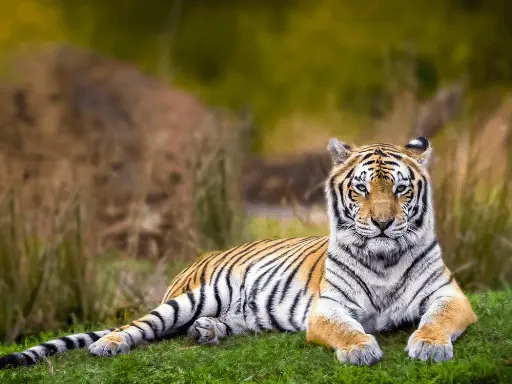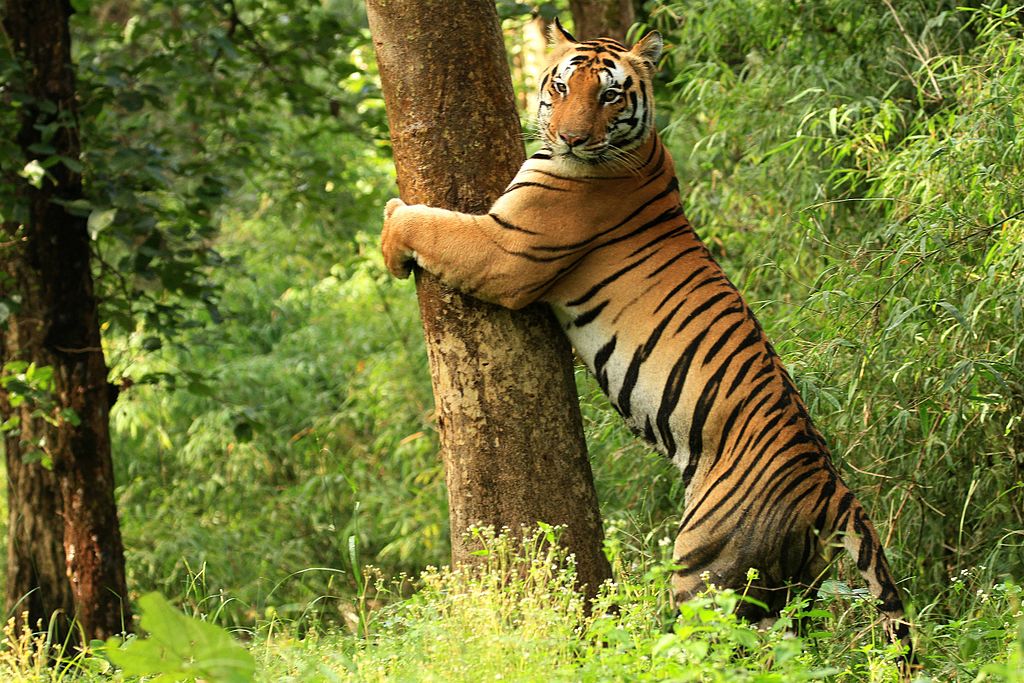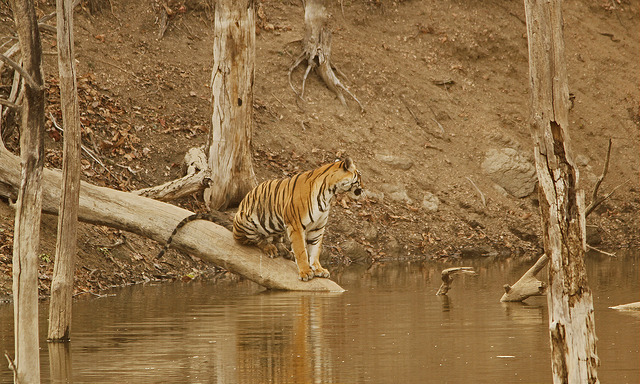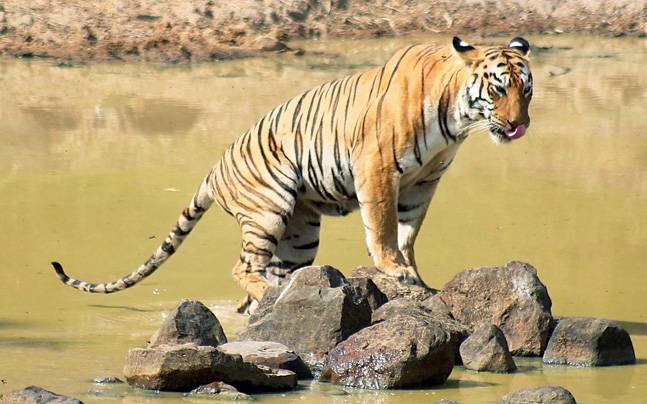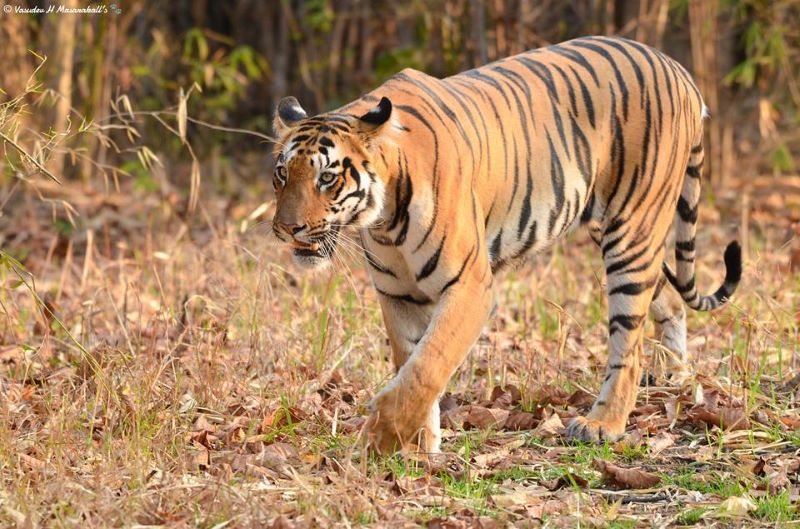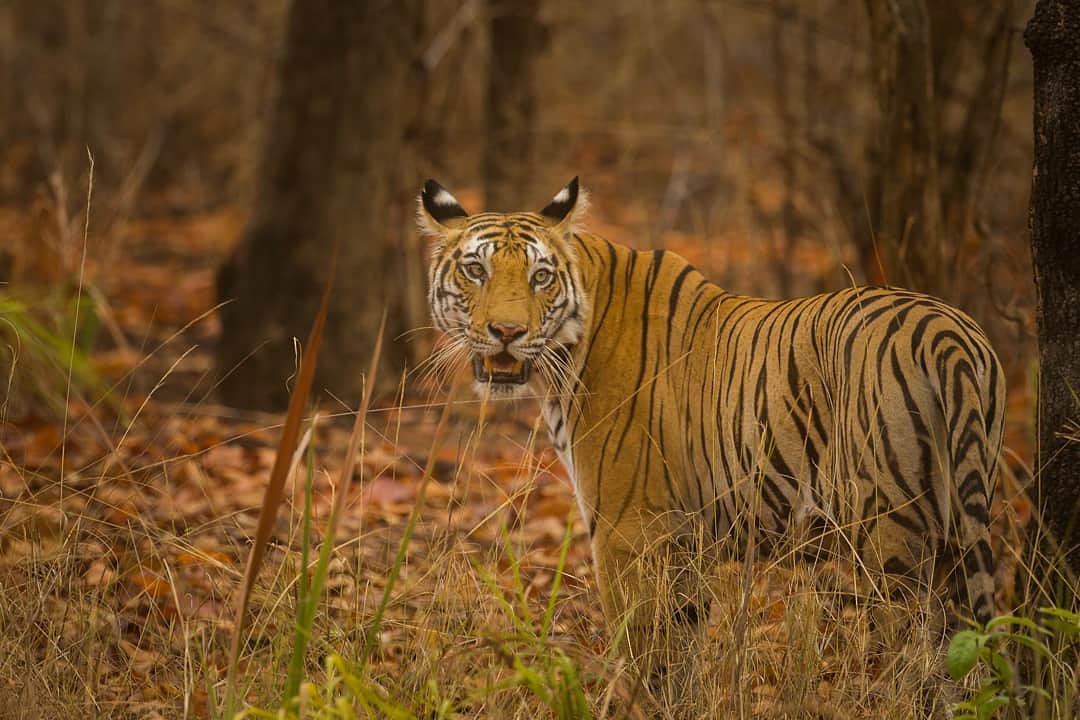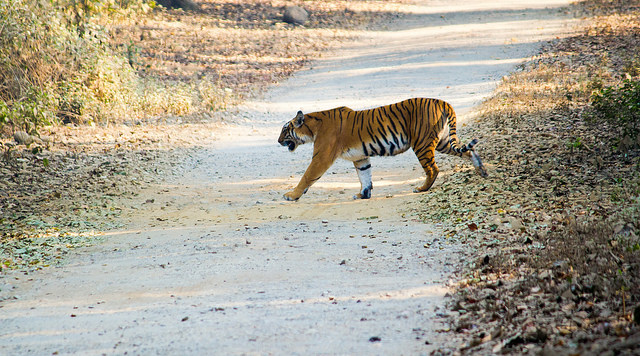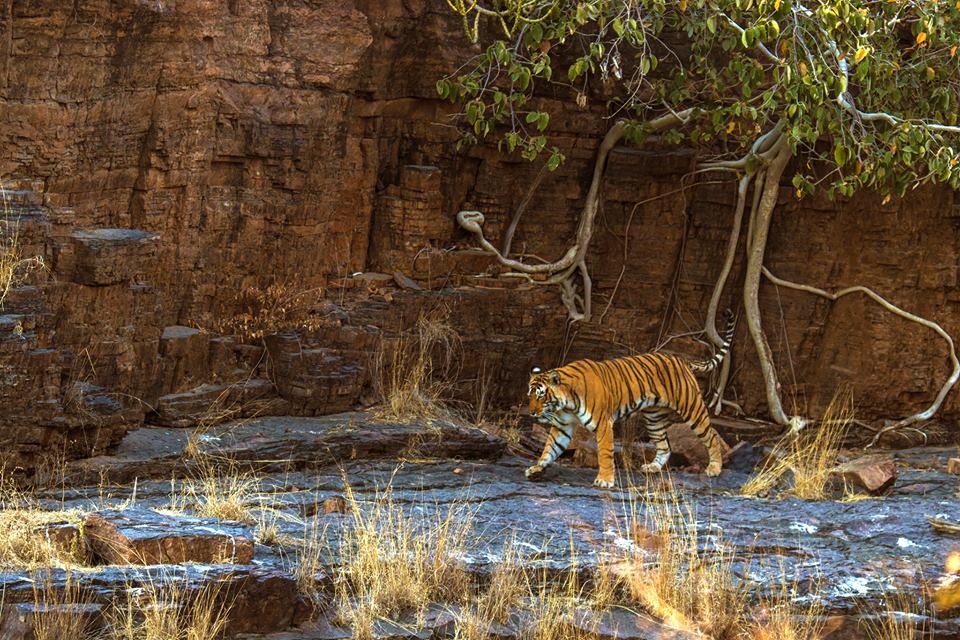Sundarban Tiger Reserve
Sundarban National Park
If you love the wild and dream of seeing a tiger in its most mysterious habitat, head straight to Sundarban National Park. This is the only place where Royal Bengal Tigers silently patrol mangrove creeks.
Unlike typical jungle safaris, here you glide through narrow waterways surrounded by dense mangroves and tidal currents. Every bend keeps you guessing. You’re not just spotting wildlife – you’re stepping into a world that feels ancient and untamed. When you finally catch a glimpse of a tiger through the trees, it sends a chill down your spine.
A Sundarban safari tour gives you more than just a holiday. It offers an escape into nature’s raw beauty and quiet thrill.
Sundarban National Park covers about 1,330 sq. km and forms the heart of the world’s largest mangrove forest. The government declared it a national park in 1984, and UNESCO later recognized it as a World Heritage Site. The park shelters Royal Bengal Tigers, saltwater crocodiles, fishing cats, spotted deer, and rare birds.
The park sits where the Ganges, Brahmaputra, and Meghna rivers meet the Bay of Bengal. This mix of land and water creates a rich, ever-changing ecosystem that pulses with life through every passing tide.
Interesting Fact – Sundarban National Park
The name “Sundarban” comes from the Sundari trees, a type of mangrove found in this region. These trees dominate the delta and give the forest its name. In Bengali, “Sundar” means beautiful and “ban” means forest, so the name Sundarbans is often translated as “the beautiful forest.”
Prime Predators
The Royal Bengal Tiger rules the Sundarbans and is uniquely adapted to this mangrove ecosystem.
Famous For?
Sundarbans is famous for its swimming tigers and the thrilling boat safaris that offer a rare chance to see one in the water or on muddy creek banks.
Major Wildlife
Royal Bengal Tiger, Saltwater Crocodile, Fishing Cat, Spotted Deer, Mudskipper, and birds like the Mangrove Pitta and Black-capped Kingfisher
Flora & Fauna in the Park
Sundarban National Park is home to the world’s largest mangrove forest. You’ll find dense mangrove species like Sundari, Goran, Dhundul, and Keora thriving in the tidal landscape. These salt-tolerant trees grow in muddy, waterlogged soil and form a natural shield against coastal erosion.
The forest floor is often covered with mangrove shrubs, pneumatophores (breathing roots), and swamps that change with the tide.
The park shelters the Royal Bengal Tiger, which has adapted to swim between creeks and hunt in the mangroves. Sundarbans is believed to have around 96 tigers, making it one of the most unique tiger habitats in the world.
Other wildlife includes Fishing Cats, Spotted Deer, Wild Boars, Indian Otters, and Rhesus Macaques. You can also find Saltwater Crocodiles, Monitor Lizards, and reptiles like King Cobra and Russell’s Viper.
Bird lovers will enjoy spotting species such as Black-capped Kingfishers, Mangrove Pittas, Egrets, Herons, and the Lesser Adjutant Stork. The mix of forest, creeks, and mudflats makes this park a haven for both land and water wildlife.

Mammals
- Royal Bengal Tiger
- Fishing Cat
- Spotted Deer (Chital)
- Wild Boar
- Indian Otter
- Rhesus Macaque
- Small Indian Civet
- Jungle Cat
- Common Mongoose
- Indian Pangolin
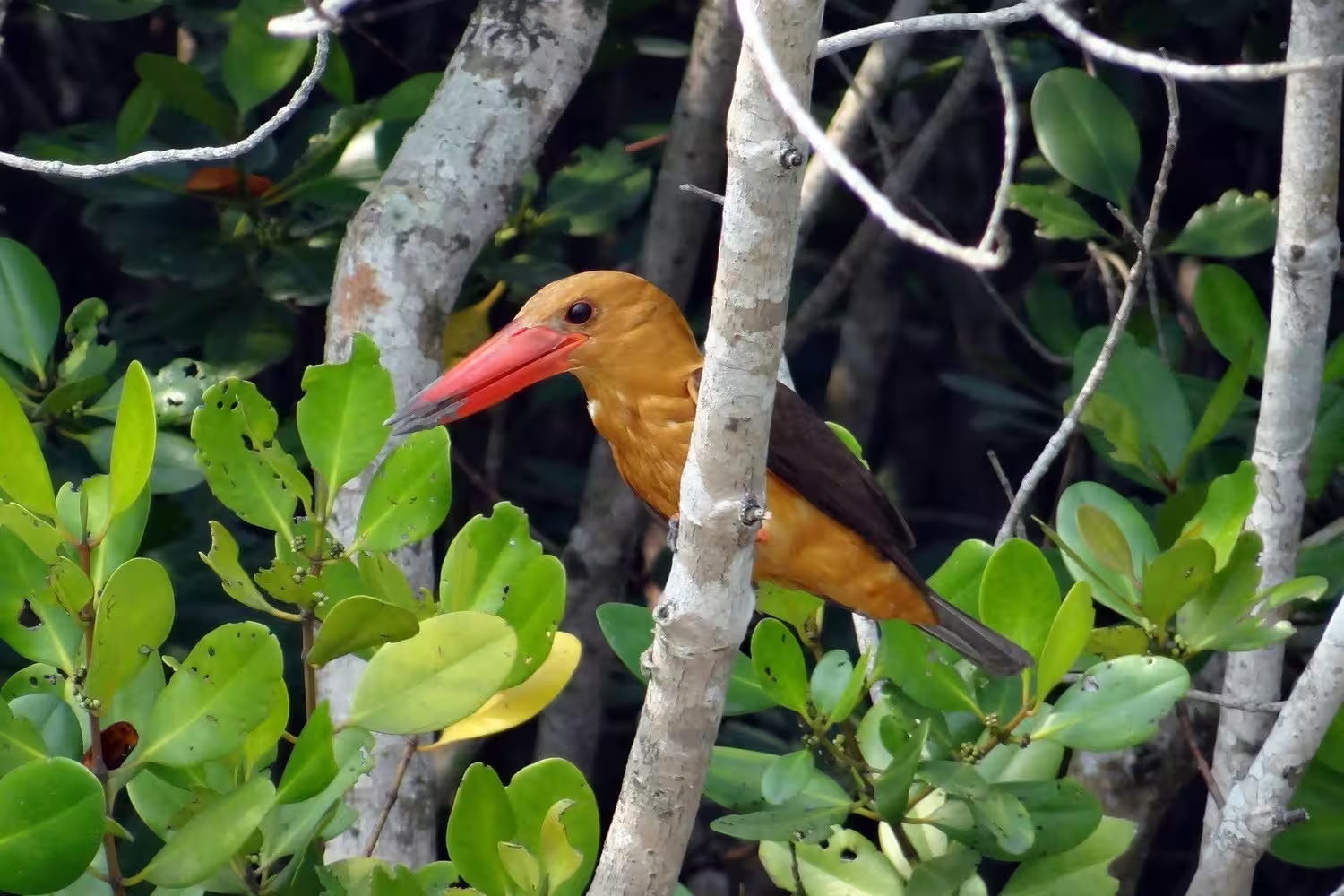
Birds
- Black-capped Kingfisher
- Mangrove Pitta
- Lesser Adjutant Stork
- Grey-headed Fish Eagle
- Brown-winged Kingfisher
- White-bellied Sea Eagle
- Collared Kingfisher
- Jungle Babbler
- Purple Heron
- Eurasian Curlew
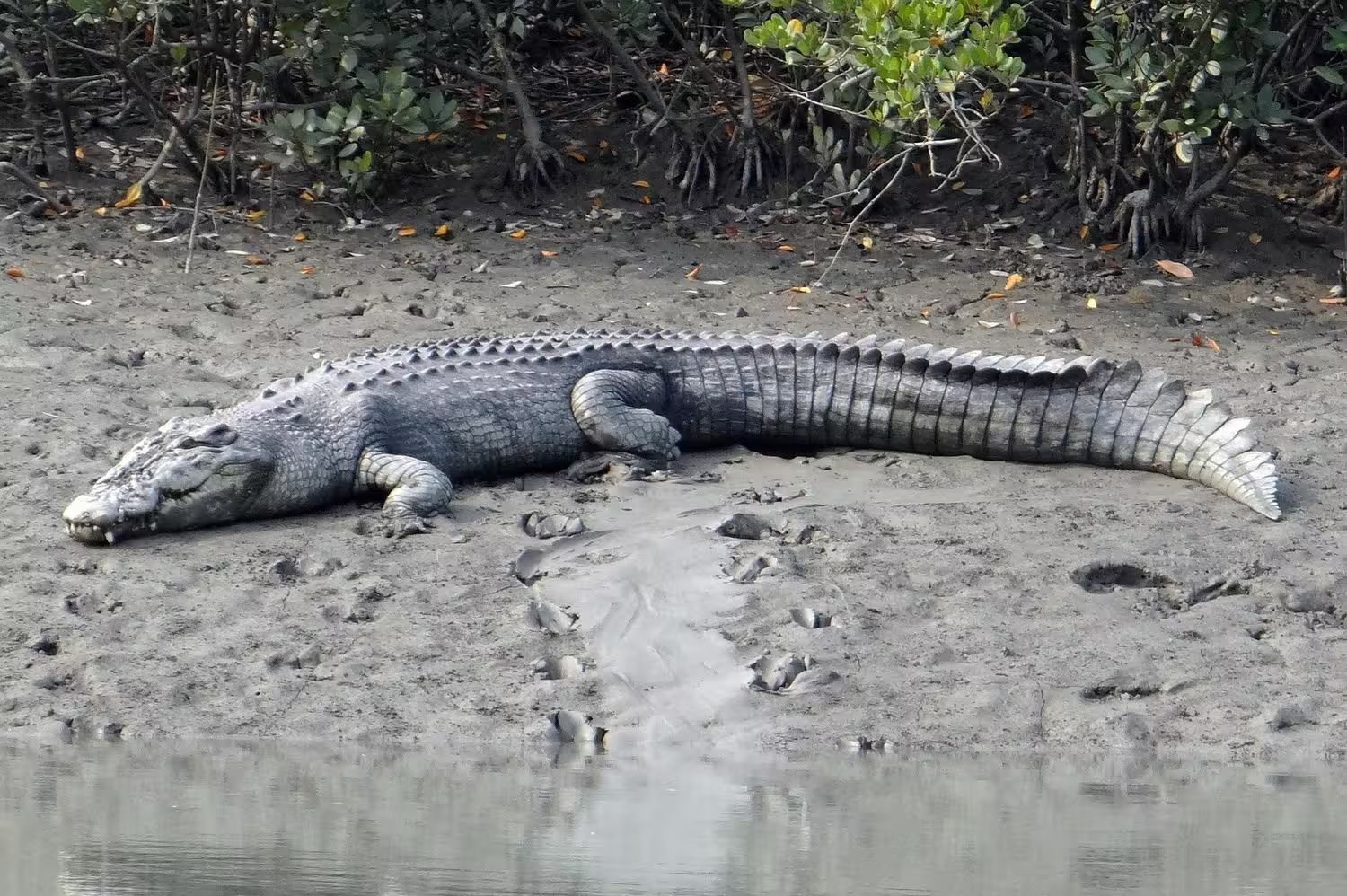
Reptiles
- Saltwater Crocodile
- King Cobra
- Indian Python
- Russell’s Viper
- Monitor Lizard
- Common Krait
- Water Monitor
- Dog-faced Water Snake
- Checkered Keelback
- Green Whip Snake
Safari in Sundarban Tiger Reserve
You know what? Sundarban safaris are weird compared to other places in India. No jeeps here – you get on these motorized boats instead. Pretty different, right? The boats go through really narrow creeks, then big rivers, with all these thick trees everywhere.
It gets super quiet out there. Your boat just moves slowly and you’re looking at the sides hoping something moves. Maybe a deer drinking water. Or some crocodile just sitting there doing nothing. Sometimes – if you’re really, really lucky – you see a Royal Bengal Tiger walking around in the mud or swimming. That’s crazy to watch.
Most trips start early morning. Makes sense because animals are awake then. Some go for hours, some for the whole day with food on the boat. You start from places like Gosaba, Godkhali, or Sonakhali to get into the park.
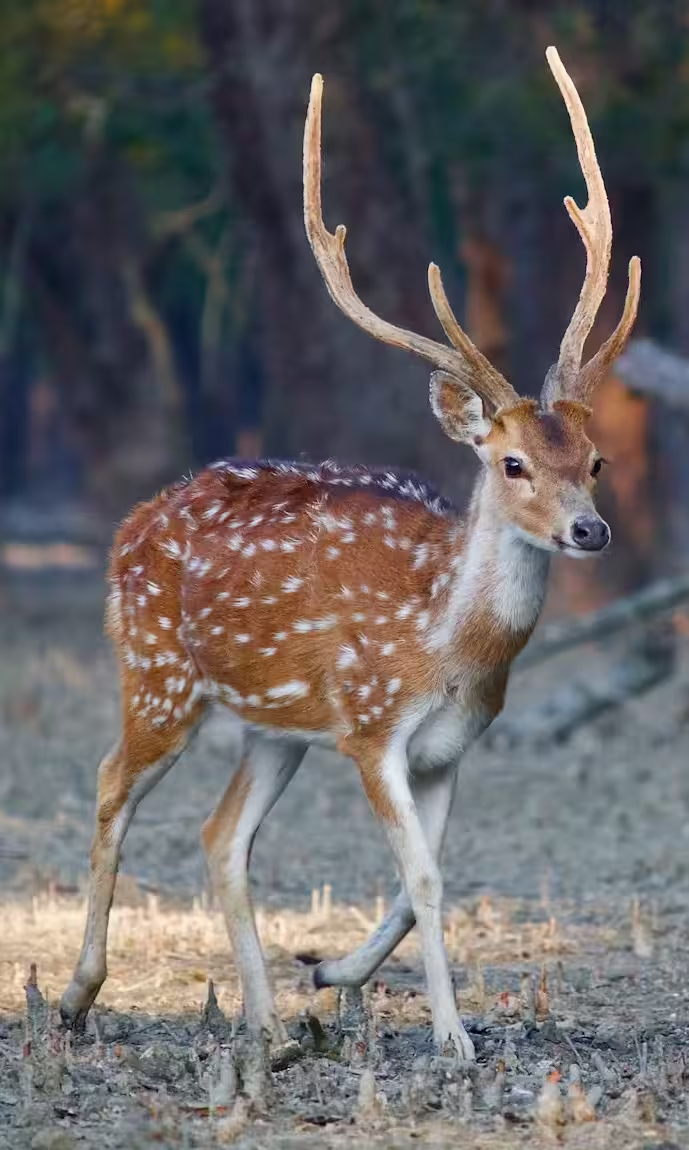
Local guides come with you. These guys are good at finding animals. They tell stories about the forest too. Some stories are scary – about dangerous stuff that happened. But interesting. They know all the waterways because they’ve been doing this job for years.
There are some watchtowers – Sajnekhali, Dobanki, Sudhanyakhali. You climb up and see everything from the top. The forest looks huge from there. Sometimes you spot animals from up there that you missed from the boat.
Each safari is different. The water changes because of tides. Creeks look different all day. The forest keeps surprising you. That’s why every trip feels new. You don’t know what’s coming next.
Sundarban Safari Tours
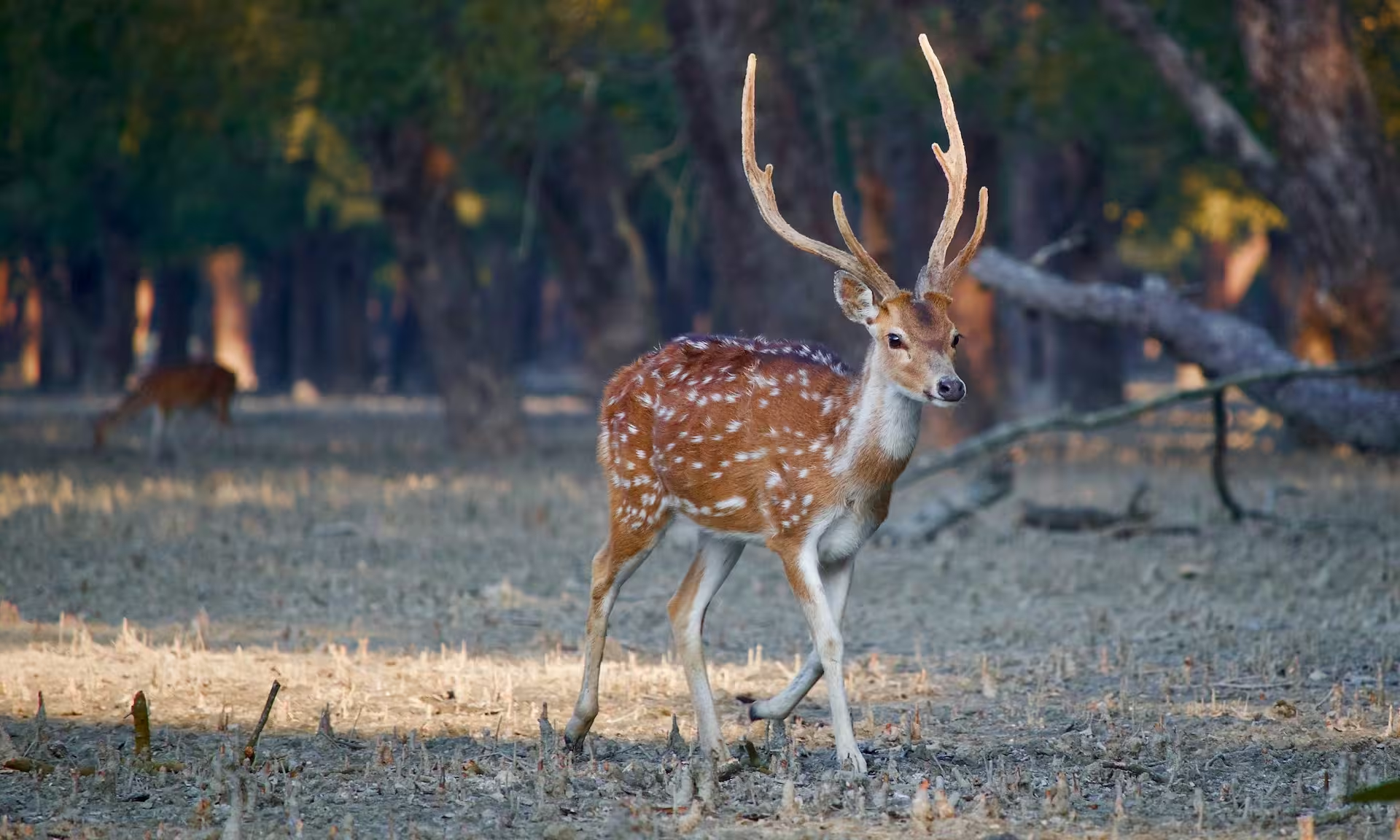
Sundarban Weekend Safari
Escape into the wild with a 2-night Sundarban safari. Enjoy peaceful boat rides, rich mangroves, and a chance to spot a tiger, all within a weekend.
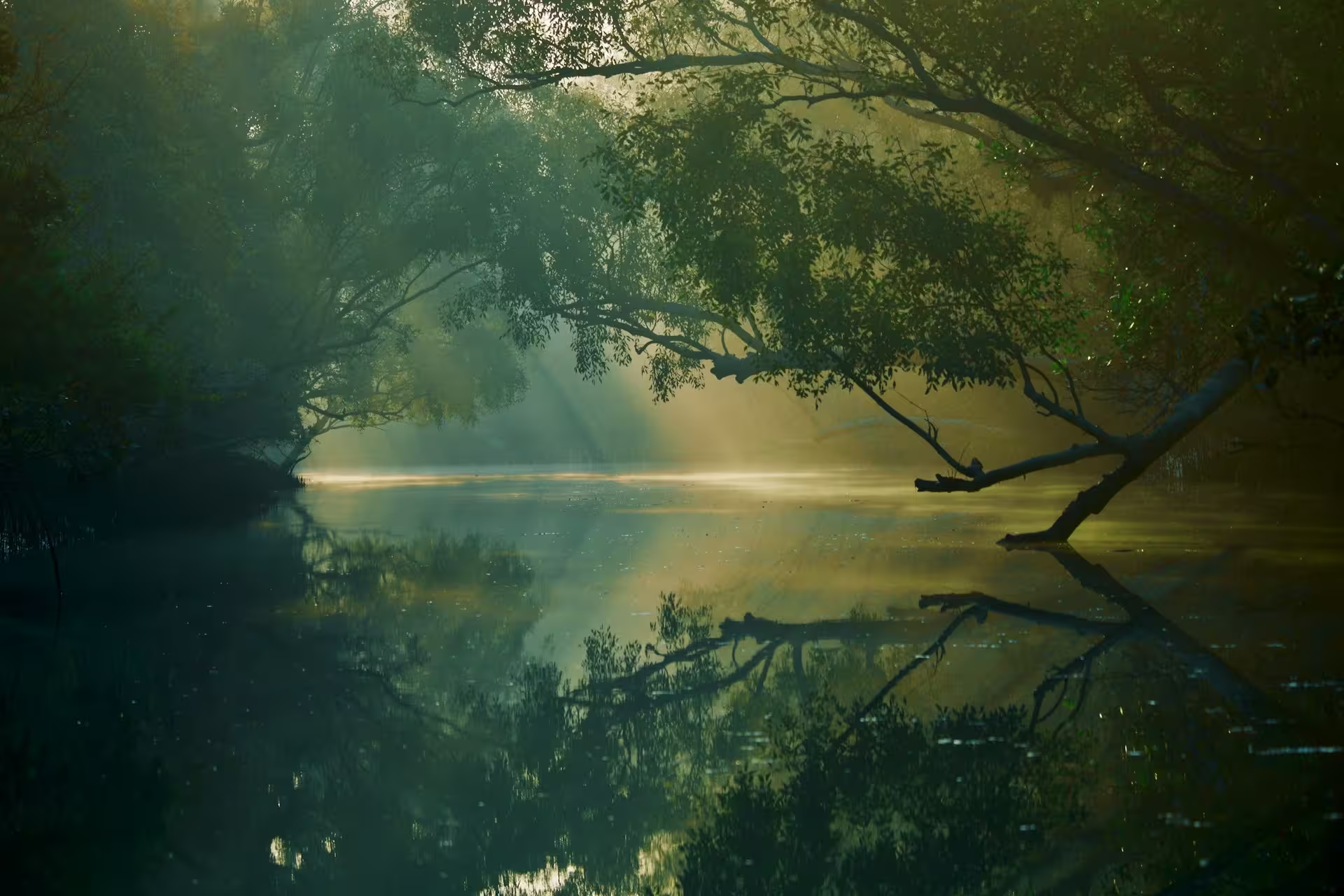
Sundarban Budget Safari
Discover the Sundarbans on a budget. Stay in eco-lodges, enjoy guided boat rides, and soak in the wilderness without spending too much.
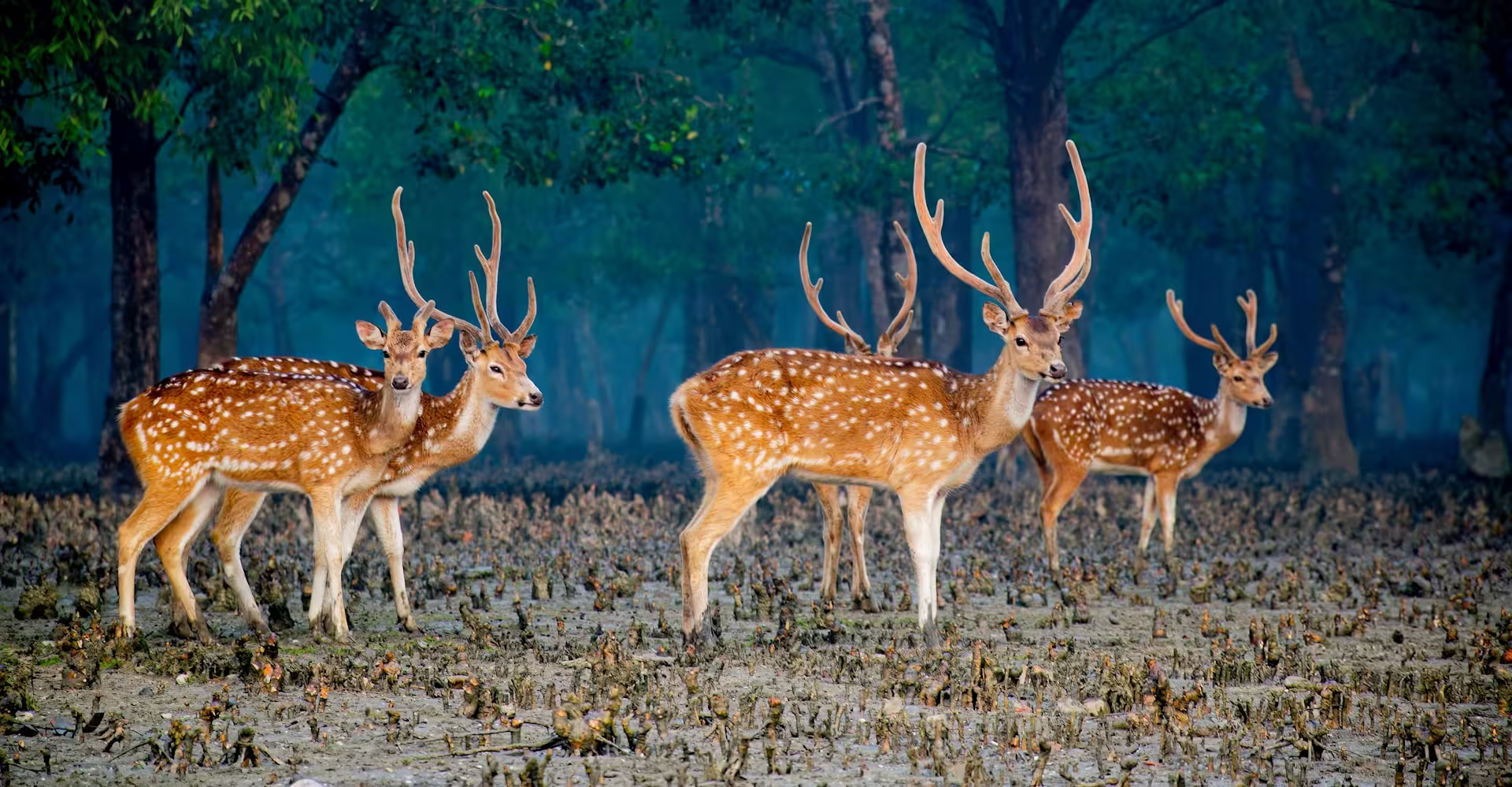
Sundarban & Kaziranga Safari
Explore two wild worlds. Spot tigers in the Sundarbans and rhinos in Kaziranga on this thrilling nature-filled tour across East India.
Zones of Sundarban National Park
Sundarban National Park is divided into three zones – Core, Buffer, and Transition, to balance wildlife conservation with tourism and local livelihood. Each zone serves a specific role in protecting the unique mangrove ecosystem and its wildlife.
Core Zone
This is the most protected part of Sundarban National Park, covering about 1,330 sq. km. No tourism or human activity is allowed here. It is a strictly reserved area dedicated to wildlife conservation. The Core Zone is home to the highest concentration of Royal Bengal Tigers and supports a rich variety of mangrove species and other wildlife in their natural, undisturbed habitat.
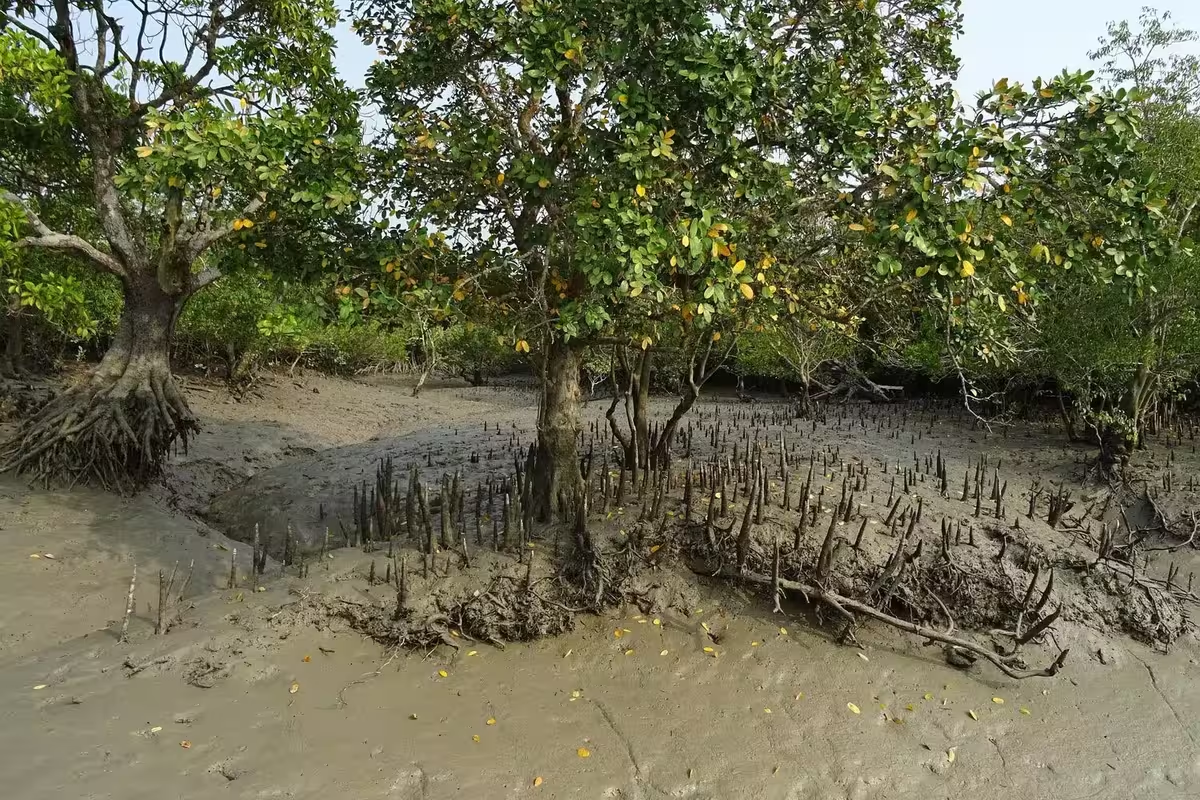
Buffer Zone
Surrounding the core area, the Buffer Zone spans around 885 sq. km. Controlled tourism is permitted here, mostly through guided boat safaris. Key watchtowers like Sudhanyakhali, Dobanki, and Netidhopani are located in this zone. While it supports tourism and research, its primary role is to reduce human pressure on the core and ensure a safe corridor for wildlife movement.
Transition Zone
This outermost zone covers nearly 1,500 sq. km and includes local villages, farmlands, and eco-tourism areas. The Transition Zone plays a vital role in sustainable development by allowing human activity in a regulated way. It promotes eco-friendly tourism, supports local livelihoods, and involves communities in forest protection and conservation efforts.
How to book Safari in Sundarban Tiger Reserve
To book an end-to-end safari package in Sundarban National Park including airport transfer, accommodation, meals, and internal transfer, you may contact Big Cats India, or schedule a free discussion with our experts to understand the best safari zone to book, based on your area of interest.
It is advised to plan your safari well in advance to get the best zones for sightings. If you are not sure which gate(s) to choose from, you can contact Big Cats India or message us for any assistance to book your safari in Sundarban.
You can also book Sundarban Safari online from the tourism website where you can also see the exact entry fee, jeep safari fee, elephant safari cost, and guide fee. However, this website only books your safari permits, not the accommodation, food, and internal transfer to the reserve gates.
Boat Safari
Keep your camera ready as you hop on a motorized boat with fellow travelers. An experienced boatman and a local naturalist will guide you through the mangrove maze in search of wildlife.
Birdwatching
Sundarbans is a paradise for bird lovers. You can spot kingfishers, herons, storks, eagles, and rare species like the mangrove pitta while cruising through the creeks. Early mornings are best for birding.
Safari Timings in Sundarbans
Boat safaris in Sundarbans usually operate between 8:00 AM and 4:00 PM, depending on the tides and weather conditions. Most safaris last between 4 to 6 hours, while full-day safaris are also available with lunch served on board.
Safari schedules may vary slightly based on the season and the departure point (Godkhali, Gosaba, or Sonakhali).
Note: No boat is allowed inside Sundarban after 6.30 PM.
Weather in Sundarbans
Sundarbans has a tropical coastal climate with high humidity and seasonal variations. The weather mainly shifts across three seasons, summer, monsoon, and winter – each offering a different kind of safari experience.
Summer (March to June): Hot and humid, with temperatures ranging from 30°C to 42°C. Safaris are possible, but the heat can be intense during midday.
Monsoon (July to September): Heavy rainfall and strong river currents dominate the season. Safari operations are limited, and travel is not recommended during this time.
Winter (October to February): This is the best time to visit, with cooler temperatures between 12°C and 28°C. Wildlife is more active, and the weather is ideal for boat safaris and birdwatching.
| Month | Jan | Feb | Mar | Apr | May | Jun | Jul | Aug | Sep | Oct | Nov | Dec |
| Min(°C) | 12 | 15 | 20 | 25 | 27 | 28 | 26 | 26 | 25 | 22 | 18 | 14 |
| Max(°C) | 26 | 28 | 34 | 38 | 40 | 36 | 33 | 32 | 32 | 32 | 30 | 27 |
Sundarban in Winters
Winter is the best time to explore Sundarbans. The air is cool, the skies are clear, and wildlife is more active near the riverbanks. Mornings and evenings can feel crisp, so carrying a light jacket is a good idea, especially during early boat safaris. Birdwatching also peaks in winter, with migratory species visiting the mangroves.
Sundarban in Summers
Summer in Sundarbans is hot and humid, especially from April to June. Daytime temperatures can rise sharply, making mid-day safaris uncomfortable. However, early morning boat rides are still peaceful, and many animals stay close to the water to cool off. Carry plenty of water and sun protection if you’re visiting in this season.
Sundarban in Monsoon
The monsoon brings heavy rains, strong tides, and lush greenery across the delta. While safaris are limited and river travel can be unpredictable, the forest looks stunning in its full glory. It’s not ideal for wildlife viewing, but for those seeking quiet and raw nature, it has its own charm. Always check local weather and park updates before planning a monsoon trip.
Best Time to Visit Sundarbans National Park
The ideal time to visit Sundarbans is from October to March, during the winter and early spring months. The weather stays pleasant, wildlife activity is higher, and birdwatching is at its best. Early mornings offer great chances to spot tigers, crocodiles, spotted deer, and exotic birds along the creeks.
Avoid visiting during the monsoon season (July to September), as heavy rains and strong tides can disrupt safaris and travel plans. Summers (April to June) can be hot and humid but still manageable if you plan boat rides early in the day.
So, for the best mix of comfort, photography, and sightings, winter is your window!
Recommended Tour
Sundarban Tiger Reserve
WhatsApp now to enquire or block your seat
How to Reach the Park
Reaching Sundarbans involves a combination of road and boat travel. The park doesn’t have direct air or rail access, but it’s well connected via Kolkata.
By Air
The nearest airport is Netaji Subhas Chandra Bose International Airport in Kolkata, about 120 km away. From the airport, you can take a taxi or cab to Godkhali or Sonakhali ferry points.
By Road
The closest railway stations are Canning (45 km from Godkhali) and Sealdah Station in Kolkata. Trains to Canning are frequent and take around 1.5 hours from Sealdah. From Canning, hire a local cab or auto to reach the jetty
By Rail
From Kolkata, you can drive or hire a taxi to Godkhali, Sonakhali, or Namkhana – the main entry points to Sundarbans. The drive takes about 3 to 4 hours depending on the route.
Once you reach the jetty, your journey into Sundarbans begins with a motorboat ride. Boat safaris are the only way to explore the park.
Pro Tip: Book your tour or safari in advance, especially in peak season, as boats and guides are limited.
| From | By Air + Road + Boat | By Road + Boat | By Rail + Road + Boat |
|---|---|---|---|
| Kolkata (Nearest) | NA | 3.00 Road + 1.00 Boat | 2.00 Rail + 1.00 Road + 1.00 Boat |
| Delhi | 2.30 Air + 3.00 Road + 1.00 Boat | 25.00 Road + 1.00 Boat | 17.00 Rail + 3.00 Road + 1.00 Boat |
| Mumbai | 3.00 Air + 4.00 Road + 1.00 Boat | 36.00 Road + 1.00 Boat | 28.00 Rail + 3.00 Road + 1.00 Boat |
| Bangalore | 2.30 Air + 4.00 Road + 1.00 Boat | 34.00 Road + 1.00 Boat | 28.00 Rail + 4.00 Road + 1.00 Boat |
| Hyderabad | 2.00 Air + 3.00 Road + 1.00 Boat | 26.00 Road + 1.00 Boat | 20.00 Rail + 3.00 Road + 1.00 Boat |
| Chennai | 2.30 Air + 3.00 Road + 1.00 Boat | 29.00 Road + 1.00 Boat | 25.00 Rail + 3.00 Road + 1.00 Boat |
| Guwahati | 1.30 Air + 4.00 Road + 1.00 Boat | 18.00 Road + 1.00 Boat | 14.00 Rail + 3.00 Road + 1.00 Boat |
| Varanasi | 1.45 Air + 4.00 Road + 1.00 Boat | 18.00 Road + 1.00 Boat | 12.00 Rail + 3.00 Road + 1.00 Boat |
| From | Time to Arrive |
|---|---|
| Corbett TR | 2 Hrs Air + 3.5 Hrs (Road+Boat) |
| Bharatpur BS | 2.5 Hrs Air + 3.5 Hrs (Road+Boat) |
| Dudhwa NS | 2.5 Hrs Air + 3.5 Hrs (Road+Boat) |
| Panna TR | 2.5 Hrs Air + 3.5 Hrs (Road+Boat) |
| Bandhavgarh | 2 Hrs Air + 3.5 Hrs (Road+Boat) |
| Ranthambore TR | 2.5 Hrs Air + 3.5 Hrs (Road+Boat) |
| Kaziranga NP | 1.5 Hrs Air + 4 Hrs (Road+Boat) |
Things you should carry with you
Essential things to carry for your Sundarban Tiger Safari
Your DSLR or Camera to capture your memorable safari moment.
Binoculars to view the wildlife from a safe distance.
Plenty of water to keep you dehydrated on a sunny day.
Hat & Shades to protect from direct sunlight.
Bandanna or Cotton Scarf to cover your face and avoid dust.
Winter wear or jacket if you are doing a safari during winter. It really gets cold very quickly after sunsets in Jungle.
Rain Cover to save you and your gears from water during rain.
Sundarban can get really colder very quickly in the evening so consider carrying woolens in the afternoon safari in Sundarban during winter’s season.

Some History of Sundarban Tiger Reserve
Sundarbans has a rich natural and cultural history dating back centuries. The region was once part of the dense forest belt mentioned in ancient texts and maps, even during the Mauryan period. Over time, parts of the forest were cleared for settlements and farming, especially during British rule.
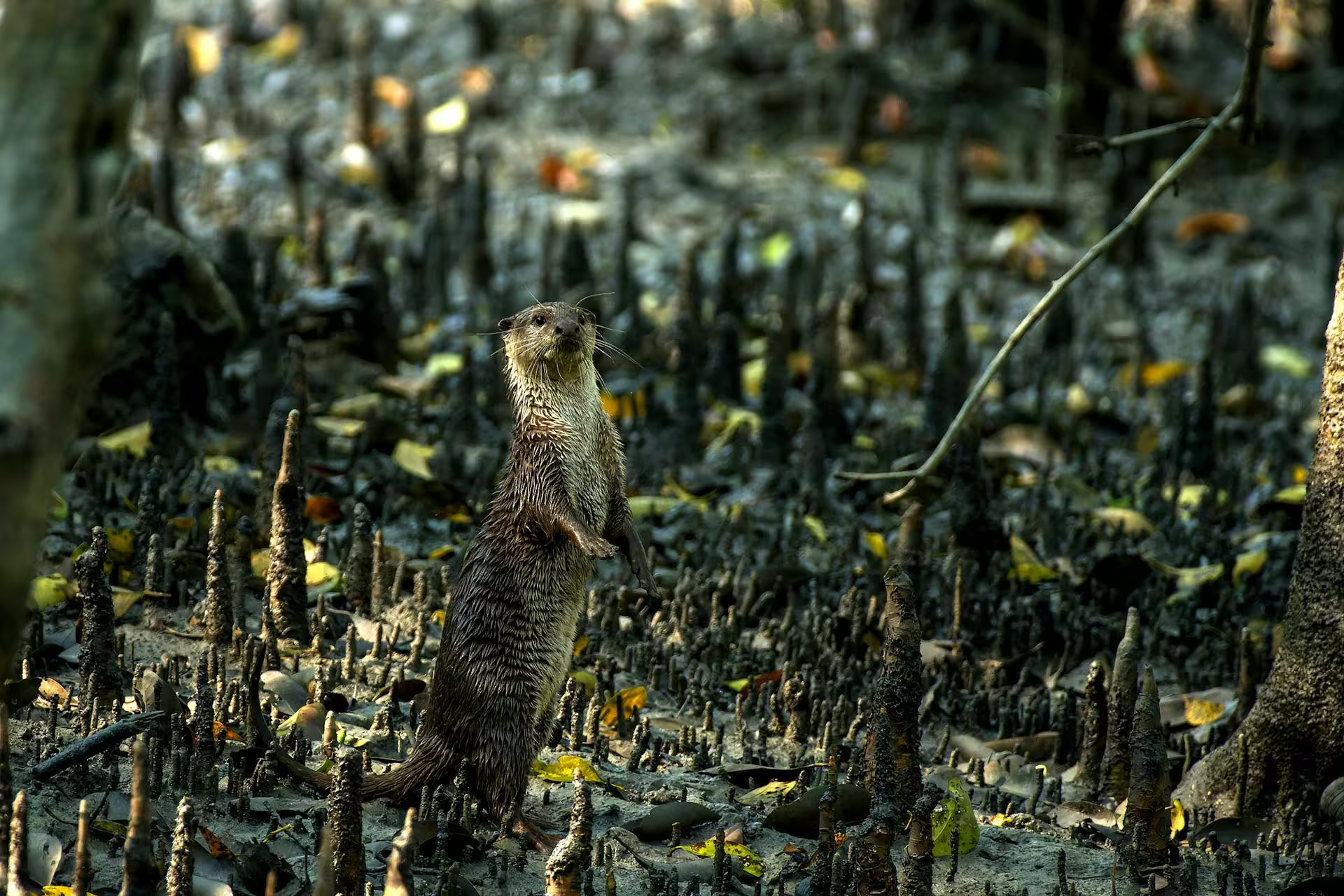
To protect the unique biodiversity and the famous Royal Bengal Tiger, Sundarbans was declared a Wildlife Sanctuary in 1977 and later became a National Park in 1984. In 1987, UNESCO recognized it as a World Heritage Site for its stunning mangrove ecosystem and rare wildlife.
Today, it remains one of the world’s largest and most vital mangrove forests, where nature and people still share a fragile but fascinating relationship.
Why visit Sundarbans?
Sundarbans is the only place in the world where Royal Bengal Tigers thrive in a tidal mangrove ecosystem. These big cats are known to swim across creeks and estuaries, adapting uniquely to the brackish waters and thick forests. Spotting a tiger here isn’t just rare, it’s magical. The entire landscape, with its winding rivers, muddy flats, and tangled mangrove roots, feels wild, raw, and untouched.
But there’s more than just tigers. You’ll find saltwater crocodiles basking on muddy banks, spotted deer tiptoeing through forest patches, and countless species of birds overhead. Boat safaris glide through silent creeks, giving you front-row seats to this rich, living ecosystem. Sundarbans offers not just a wildlife sighting, but a deep connection with nature, far from the usual safari trails.
Sundarban General Info Card
- Total Area: 10,000 sq. km (approx.)
- Location: South 24 Parganas, West Bengal
- Notified as National Park: 1984
- Declared UNESCO Site: 1987
- Nearest Airport: Kolkata (3–4 Hours by Road + Boat)
- Nearest Railway Station: Canning (1.5 Hours by Road + Boat)
Sundarban Wildlife Info Card
- Carnivorous: Royal Bengal Tiger, Fishing Cat, Jungle Cat
- Herbivorous: Spotted Deer, Wild Boar
- Omnivorous: Otters, Monitor Lizards
- Reptiles: Saltwater Crocodile, Water Monitor, King Cobra
- Birds: Over 270 Species (including Black-capped Kingfisher, Herons, Egrets)
Sundarban Tour Info Card
- Ideal Tour Length: 2N3D or 3N4D
- Can Extend With: Kolkata City Tour, Bakkhali Beach, Diamond Harbour
- Tour Starting Points: Kolkata
- Is Tour Customizable?: Yes
- Safari Options: Motorized Boat Safari (Full-day or Half-day)




